Search Results
Back to JTS Torah Online's Main page
Healthy (and Maybe Even Holy) Ambivalence
Apr 24, 2010 By David Hoffman | Commentary | Aharei Mot | Kedoshim
Building identity is complicated and sometimes painful work. This is true both on an individual level and when it comes to nations. What makes thinking about identity even more complicated is the fact that identity is really never completely “formed.” Sure, a national identity should have core commitments. But I would suggest that we shift our understanding of identity from something that is fixed to a subjective process by which one group comes to recognize itself as being different from other groups. Understood in these terms, identity is dynamic—always emerging and continually being transformed over time.
Read More
Caring for Our Parents
May 9, 2009 By Judith Hauptman | Commentary | Aharei Mot | Kedoshim
The third verse of Parashat K’doshim says, “Ish imo v’aviv tira’u” (One should revere his mother and father) (Lev. 19:3). The same mandate appears twice as the fifth commandment, “Kabed et avikha v’et imekha” (Honor your father and your mother) (Exod. 20:12; Deut. 5:16). Honoring parents was considered a virtue in the Roman world. Parents took care of their children, and children were expected to return the favor when parents grew old. But Rome did not create a legal obligation to care for parents, and a child who refused to do so could not be compelled by the courts.
Read More
A Jewish-Buddhist Understanding of Holiness
May 3, 2008 By Marc Wolf | Commentary | Kedoshim
Leon Wieseltier, in a recent column in The New Republic about diversity at Harvard, commented about the church bells he heard growing up on Avenue O.
Read More
In the Wake of Tragedy
Apr 28, 2007 By Marc Wolf | Commentary | Aharei Mot | Kedoshim
In the immediate wake of tragedy, our response is appropriately silence. Aaron movingly illustrated this in the parashah from two weeks ago after he lost his sons, Nadav and Avihu. Following their shocking deaths, the Torah records Aaron’s response to Moses’ attempt at consolation simply as, “and Aaron was silent” (Leviticus 10:3). We cannot begin to imagine the sense of loss and disbelief that radiated from the depths of his soul when he learned his sons were destroyed by the God who ordained their service.
Read More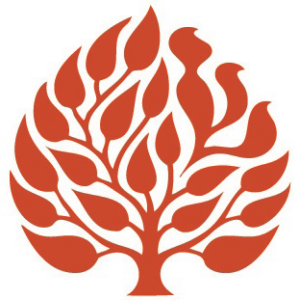
The Holiness of Immigration Reform
May 6, 2006 By JTS Alumni | Commentary | Aharei Mot | Kedoshim
By Rabbi Felipe Goodman
One of the most beautiful yet most difficult to understand statements made by God in the entire Torah is contained in the opening verses of Parashat Kedoshim: “K’doshim tihyu ki kadosh Ani Adonai Eloheihem [You shall be holy, for I, The Lord your God, am holy].” In a sense, this is one of the things that we as humans expect God to demand from us. To read the opening words of Parashat K’doshim produces no great shock or crisis in faith; on the contrary, it immediately makes us proud to know that God expects more from us than what we usually expect from ourselves.
Read More
Whose Land?
May 6, 2006 By Matthew Berkowitz | Commentary | Kedoshim | Shavuot
Over the past few weeks, immigration and the protection of foreign workers have taken center stage on the American political scene. Far from being a distant, abstract philosophical conversation, the issue is one that the Jewish community has wrestled with throughout its many years of wandering. Indeed, this is a topic that touches the heart and soul of our people.
Read More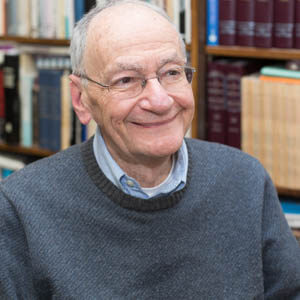
Proclaiming Freedom
May 15, 2004 By Ismar Schorsch | Commentary | Aharei Mot | Kedoshim
On our way to Shavuot from Pesach, we read three Torah portions that epitomize the deep structure of Judaism. The challenge of freedom is to make it a blessing. How can we avoid frittering it away in dissipation, keeping it from morphing into a curse? The Hebrew names of these parshiyot bear the message: mountain, laws and wilderness. The Torah forges a religion designed to get us through the chaos of an engulfing wilderness with a ramified system of legal prescriptions whose inspiration is rooted in the revelation at Mount Sinai. A faith-based community is the matrix of individual survival in a hostile environment.
Read More
Passover in the Light of Yom Kippur
May 1, 2004 By Ismar Schorsch | Commentary | Aharei Mot | Kedoshim | Pesah | Yom Kippur
If the first half of this week’s double parasha reminds you of Yom Kippur, despite our proximity to Passover, you are not in error. The two Torah readings for that solemn day are both drawn from Aharei Mot. Chapter 16, which we read at Shaharit on Yom Kippur morning, depicts the annual ceremony on the tenth day of the seventh month for cleansing the tabernacle of its impurities and the people of their sins. The English word “scapegoat” preserves a verbal relic of the day’s most memorable feature – the goat destined to carry off symbolically the collective guilt of the nation into the wilderness. Chapter 18, reserved for Minhah in the afternoon, defines the sexual practices which were to govern the domestic life of Israelite society.
Read More
Our Neighbor’s Blood
May 1, 2004 By Melissa Crespy | Commentary | Kedoshim
What’s in a translation? When the translation is of a verse in the Torah – there is potentially quite a lot. Therefore, in reading the Etz Hayim Humash’s translation of Leviticus 19:16, I was struck by its rather non-literal translation of Lo ta-a-mod al dam ray-ekha. In the context of surrounding verses concerning fair and just treatment of others, Etz Hayim translates our verse: “Do not profit by the blood of your fellow”, and the commentary on the verse tells us that, in context, the verse seems to mean: “Do not pursue [your] livelihood in a way that endangers another or at the expense of another’s well-being.” (p. 696) This translation and commentary do seem to fit the context of the surrounding verses.
Read More
The Command to Plant Trees
May 3, 2003 By Ismar Schorsch | Commentary | Kedoshim
From our apartment on the Upper West Side of Manhattan, we enjoy a glorious view of Riverside Park below and the Hudson River beyond. Overnight, it seems, the trees have once again donned a glorious green canopy of leaves. Gone is the drab garb of winter. Life has surged back with irrepressible vigor and astonishing beauty. Each year I marvel at the swiftness of the scenic change.
Read More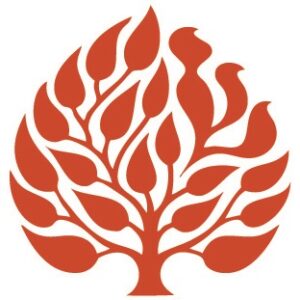
Gleanings Today
Mar 5, 2003 By Lewis Warshauer | Commentary | Kedoshim
During a recent visit to Kansas City, I was talking to friends at my former congregation about their recent trip to the New York area. They had been to a wedding reception and marveled at the prodigious sushi bar. I smiled when they admitted to making the classic mistake of those not familiar with New York folkways: filling up on appetizers in the mistaken notion that they are the main meal.
Read More
Explaining the Inexplicable?
Apr 20, 2002 By Ismar Schorsch | Commentary | Aharei Mot | Kedoshim
In speaking of the legal corpus which dominates this week’s double parashah, the Torah makes use of two terms, mishpatim and hukkim, translated as “rules” and “laws.” Technically, as Baruch A. Levine makes clear in his commentary, they reflect two sources of legal practice. The word mishpatim deriving from the root sh-f-t, “to judge,” embodies rules articulated in a judicial setting. Hukkim from the root h-k-k “to engrave” or “inscribe” suggests laws promulgated by decree. In our parashah the terms seem to be synonymous, because God is the only lawgiver: “My rules (mishpatim) alone shall you observe, and faithfully follow My laws (hukkim): I the Lord am your God” (18:4).
Read More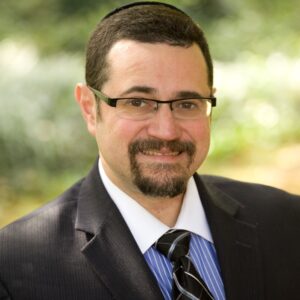
Mitzvah vs. Mitzvah
May 5, 2001 By Joshua Heller | Commentary | Aharei Mot | Kedoshim
Sometimes in the Biblical text, the first half and second half of a verse seem to be talking past each other. The first half addresses one commandment or concept, and the second half seems to go off on a tangent. This strange type of juxtaposition appears a number of times in K’doshim , the second half of our double portion for the week.
Read More
Love for All
May 9, 1998 By Judith Hauptman | Commentary | Aharei Mot | Kedoshim
This Shabbat we will read two Torah portions, Aharei Mot and K’doshim . The topics covered in these parashiyot range from the ritual requirement of sending a scapegoat out to the desert on Yom Kippur, to a list of forbidden sexual relationships, to fundamental social legislation, reminiscent somewhat of the Ten Commandments.
Read More
To Save a Life
May 6, 1995 By Ismar Schorsch | Commentary | Kedoshim
Passover this year was not a festival of freedom for Alisa Flatow of West Orange, New Jersey. The Brandeis junior was rendered brain dead by a piece of shrapnel on April 9, when a Palestinian suicide bomber drove his van of explosives into a busload of Israelis near Kfar Darom in the Gaza Strip. But before her father Stephen allowed his daughter to be taken off the respirator in Beersheva Hospital, he snatched the last measure of life from her limp body: her undamaged organs and corneas were removed “as a lasting contribution to the people of Israel.”
Read More
Sanctification through Mitzvah
Apr 23, 1994 By Ismar Schorsch | Commentary | Kedoshim
What is the nature of holiness? I’m not sure that our noisy, frenetic, secular lives ever prompt us to raise the question. And yet it lies at the very heart of the Torah’s message to Israel. Just before Sinai God singles out Israel as God’s “treasured possession… a kingdom of priests and a holy nation (Exodus 19:5–6).” Again this week God instructs Moses: “Speak to the whole Israelite community and say to them: You shall be holy, for I the Lord your God, am holy (Lev. 19:1–2).”
Read More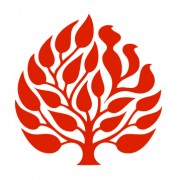

Aharei Mot-Kedoshim
Jan 1, 1980
1 The Lord spoke to Moses after the death of the two sons of Aaron who died when they drew too close to the presence of the Lord. 2 The Lord said to Moses:
Tell your brother Aaron that he is not to come at will into the Shrine behind the curtain, in front of the cover that is upon the ark, lest he die; for I appear in the cloud over the cover.

SUBSCRIBE TO TORAH FROM JTS
Our regular commentaries and videos are a great way to stay intellectually and spiritually engaged with Jewish thought and wisdom.




